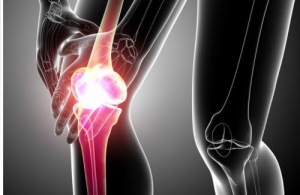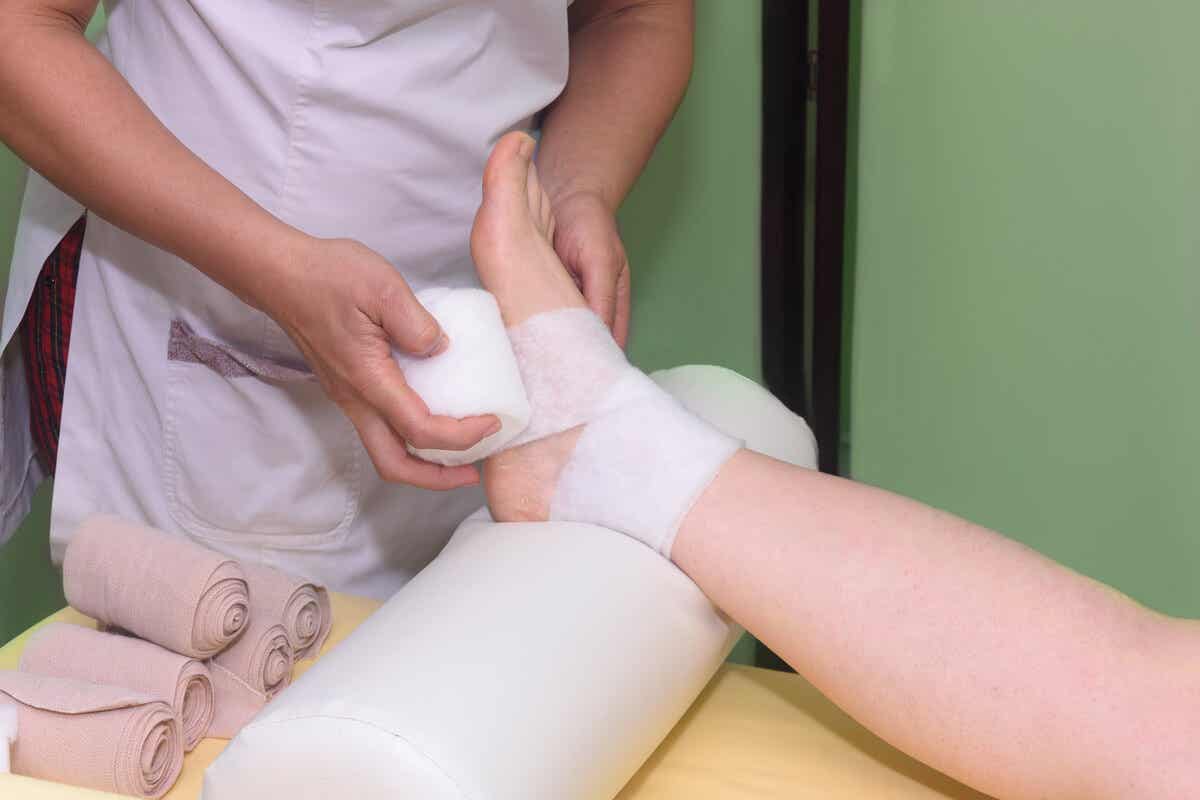How to Ease Tendonitis Symptoms Naturally


Written and verified by psychologist Valeria Sabater
Tendonitis appears mainly as inflammation or swelling of the tendons, which are the fibrous structures in our bodies that link muscle with bone. In this article. we’ll give you some tips for how to ease tendonitis pain and problems.
This issue can hamper our daily activity to a great extent. Although the majority of the time it is associated with an injury or over-use, it also tends to develop as you get older. Tendons lose their original elasticity and degenerations appear, also called “tendinosis.” Tendonitis management doesn’t have to be complicated.
Where does tendonitis appear?
There are so many basic structures in our body that fulfill the important function of joining muscle with bone, and tendonitis can appear in any of them. It should be noted, though, that this affliction usually appears in the following areas:
- Elbow
- Heel (Achilles tendonitis)
- Wrist
- Shoulders
What are the causes?

- Blows or injuries that directly affect the tendon
- Minor injuries that are then followed repeatedly by a certain strenuous activity, eventually causing an injury
- Excessive work on a certain part of our body to the point that it suffers from over-use
- Certain infections
- Rheumatic diseases
- Aging, where the tendon no longer has the necessary elasticity.
Symptoms of tendonitis
- Pain and inflammation of the affected area, especially when you’re trying to stretch
- Excessive pain at night
- At times this pain can be confused with a sprain or a bone fracture.
It is always up to your doctor to determine the precise diagnosis and best course of treatment. There are specific tests to pinpoint if you have tendonitis.
Still, it’s always good to know how to prevent certain diseases or injuries that can later end up adversely affecting our quality of life. In the following section, we offer you some simple remedies for helping you deal with tendonitis.
These techniques can provide relief from the pain and also some ways to better nourish your body with the goal of keeping the tendons strong and elastic, helping you to better cope with this bothersome affliction.
Joint pain can be related to tendon pain. Learn more about finding relief here: Incredible Natural Remedies for Joint Pain
How to ease tendonitis externally

1. Rest the affected area
It’s important to immobilize the inflamed part of your body – whether it be the shoulder, the wrist, or the heel – for a couple of days so that movement does not disturb the injured tendon.
Sometimes the doctor can apply a cast, but this is not necessary if you can keep resting it and refrain from engaging in any activity that can cause more damage.
2. Apply hot and cold
Bags of ice are great for lowering inflammation – alternate them with warm compresses (without burning the affected area.)
You can also make a chamomile infusion and apply a dressing saturated with the liquid to the affected area. It’s very beneficial for lowering inflammation.
How can you utilize temperature for healing purposes? Check out: How to Treat Pain Symptoms Naturally
3. Aloe Vera
An excellent regenerator, aloe soothes inflammation and is perfect for these types of injuries.
Take two or three leaves of the plant, extract the juice, and mix it with half a cup of hot water until you get a sort of warm puree. Create a compress with the mix and apply to the area where you have tendonitis.
4. Salt and vinegar baths
Heat water and place it in a container with coarse salt and a cup of vinegar and soak the affected area in it for 15 or 20 minutes. You can repeat this three times a day. Little by little, you will see improvement.
5. Massages with alcohol and rosemary
Rosemary is excellent for relieving inflammation, as well as being an anti-rheumatic, antiseptic, cardiotonic, etc.
You can make a tonic with 25 grams of rosemary mixed with 250 cubic cm of ethyl alcohol, placing the mixture inside a dark bottle with an air-tight seal.
Let it set for a week, then strain the liquid. This will give you an excellent tonic for massaging the affected area. It’s simple.
How to ease tendonitis internally
Willow Bark
Willow bark works like aspirin. You can take two grams of the dried bark in an infusion with a glass of water. A cup a day is sufficient. (Don’t take willow bark if you are allergic to aspirin.)
Echinacea
Echinacea is a potent anti-inflammatory agent that’s very adept at helping with muscle and tendon injuries. It can also be taken in an infusion. Try one tablespoon of the dried herb with a glass of water. (Up to 2 glasses per day!)
Foods rich in magnesium and silicon
Magnesium and silicon are excellent facilitators for the regeneration of muscles and tendons. They can be found in almonds, soy, spinach, lettuce, asparagus, and more.
Pineapple
Finally, pineapple is a great fruit to ease tendonitis pain and prevent inflammation in the tendons. It’s commonly used by athletes for preventing injuries and soothing muscular pains.
For this reason, it would be very advantageous to introduce it to your salads. If possible, try mixing it with papaya chunks – this combination will help you ease tendonitis inconvenience and complications, getting you back to your daily routine!
All cited sources were thoroughly reviewed by our team to ensure their quality, reliability, currency, and validity. The bibliography of this article was considered reliable and of academic or scientific accuracy.
- Wavreille, G., & Fontaine, C. (2009). Tendón normal: anatomía y fisiología. EMC – Aparato Locomotor. https://doi.org/10.1016/S1286-935X(09)70909-8
- Martí, M. R., Pérez, M., Burgaya, A., Calvet, P., & Gondolbeu, A. (2015). Anatomía aplicada a la cirugía de los tendones flexores. Revista Iberoamericana de Cirugía de La Mano. https://doi.org/10.1016/j.ricma.2015.08.001
- Brunon-Martinez, A., Romain, M., & Roux, J.-L. (2006). Rehabilitación de las lesiones tendinosas traumáticas de la mano. EMC – Kinesiterapia – Medicina Física. https://doi.org/10.1016/S1293-2965(06)47870-1
This text is provided for informational purposes only and does not replace consultation with a professional. If in doubt, consult your specialist.








